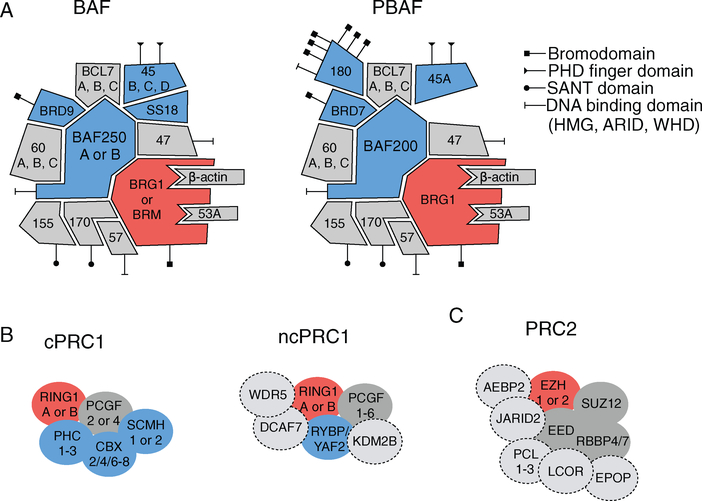Figure 1.
Composition of mammalian SWI/SNF and polycomb group complexes PRC1 and PRC2. (A) mSWI/SNF chromatin remodeling complexes assemble into two distinct complexes, each containing an ATPase subunit (depicted in red), subunits specific to one of the two assembly forms (depicted in blue), and core subunits present in both complex forms (gray). DNA-binding and histone recognition domains are marked according to the legend. (B) Polycomb repressive complex 1 assembles into canonical PRC1 (cPRC1) and non-canonical PRC1 (ncPRC1) complexes possessing a ubiquitination subunit (depicted in red), subunits unique to one complex form (depicted in blue), and accessory subunits that are incorporated into different ncPRC1 forms (depicted by a dashed line). (C) Polycomb repressive complex 2 (PRC2) assembly includes a methyltransferase subunit (depicted in red) which places the H3K27me3 repressive mark, other core subunits (shown in gray), and accessory subunits that are incorporated into different PRC2 forms (depicted by a dashed line).

